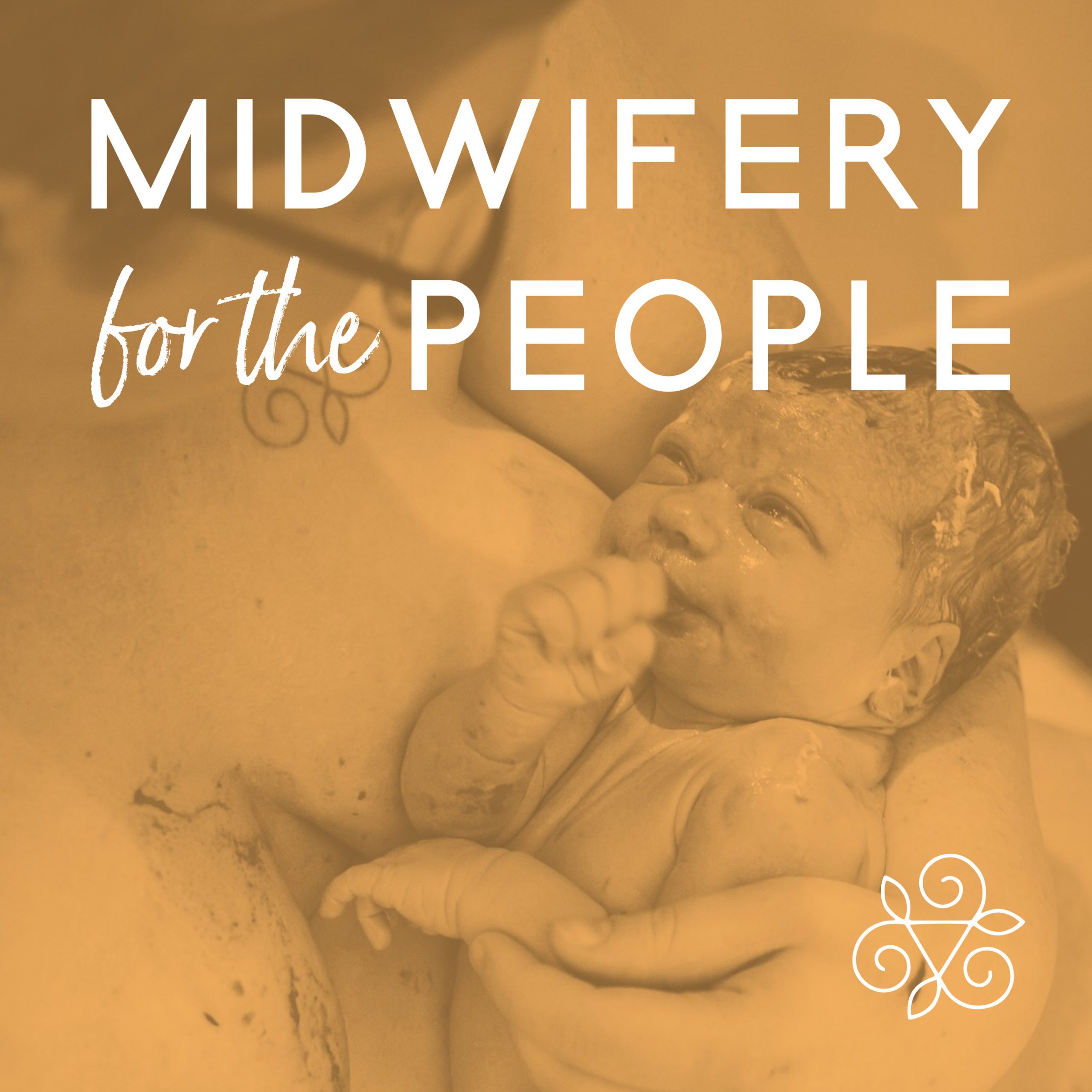“Know Better; Do Better”
Premature birth and the new paradigm
By Jacque Campbell

 
 
I begin these written thoughts with much care and love for the mothers and babies who have bravely faced premature birth and fought for the health to leave the NICU walls behind and often fight for health their entire life. I do not want to suggest that the choices made, or not made, by moms of preemies were wholly inadequate or made naively. Rather, I want to challenge our current birthing mindset. Prematurity should be a rare ending to a pregnancy. Pregnancy is a sacred time and the babies that are grown during this time deserve to be given all the time they truly need. There are times when a mother, despite her best efforts to nourish herself and her baby, finds herself making extreme choices to save herself and her baby. In these times, we are thankful for such medical support.
For thousands of years, reproduction has worked for the human race. We, by and large, have been successful at being fruitful and multiplying. Many primitive cultures even promoted a nutrient dense diet for their children and those within childbearing age, male and female. Hippocrates said, “Let food be thy medicine and medicine be thy food.” The human race would not be sustainable if we had a chronic prematurity rate. The reason is plain, until recently very premature babies would die. Certainly, we have the modern medical community to thank for the lives saved. Do we hold the process of reproduction sacred? Do we value the ability to easily conceive and bear children? Are we ready to look for a new paradigm as we work to help more babies gestate to full term?
A trip past the local hospital can conjure up the wonder of how many millions of dollars are spent on premature babies alone. No matter who pays the bill, whether it be the parents, the insurance company or tax payers, the burden is tremendous. In 2005 the estimated cost for preterm birth in the United States was $26.2 billion annually, above the average cost of term births. The national cost of preterm birth often extends well past birth of the baby. Preterm babies are at higher risks for complications and health issues such as jaundice, retinopathy of prematurity, and chronic lung disease. The annual cost in the United States for early assistance (1-3 years) could have been as high as $611 million back in 2005. An additional $1.1 billion is spent for special education in comparison to that which is spent on a traditional education. According to the National Vitals Statistics Report released by the Center for Disease Control earlier this year, overall preterm birth has risen from 9.57% to 9.62%. This increase is the first since 2007 when national data began to be collected on gestation. The percentage of late term preterm birth (34-36 weeks) went up slightly from 6.82% to 6.87%; while the early term (prior to 34 weeks) remained the same at 2.75%. These rates are all considerably lower than those in 2007, which is an overall good view. The national known organization, The March of Dimes, collects annual information in their efforts to lower preterm births through national awareness and fundraising.
The March of Dimes has come out with their 2016 “Report Card,” in which they evaluate the current prematurity rates among differing races and ethnicities. After its evaluation, the organization gave the United States an overall “C” grade with a few states, including Louisiana and Alabama, receiving an “F”. It is the desire of The March Dimes organization for women in all ethnic backgrounds and races to have equal opportunity for healthy, term babies:
“The 2016 March of Dimes Report Card demonstrates that there is an unfair burden of premature birth among specific racial and ethnic groups as well as geographic areas,” says Dr. Jennifer L. Howse, president of the March of Dimes. “The March of Dimes strives for a world where every baby has a fair chance, yet we see this is not the reality for many mothers and babies. Babies in this country have different chances of surviving and thriving simply based on the circumstances of their birth.”
Non-Hispanic white babies born preterm fell slightly (8.91%-8.88%) while both non-Hispanic black (13.23%-13.39%) and Hispanic (9.03%-9.13%) preterm babies rose. The new paradigm of midwifery care seeks to empower women of all ethnicities, racial backgrounds and economic situations to make the best choices for their bodies and babies. This includes the autonomy to choose whether or not to follow through with a medical procedure. With the statistics of preterm birth and the national monetary burden from them, we need to look to the past to understand how this problem came to be in order to make a change for future generations.
We have lost the understanding of what makes fertility and full term gestation possible. We have replaced real food with pseudo-food that is quickly prepared and fortified with lab created nutrients. We encourage our young women far too often, to take chemicals and lab created hormones to prevent untimely pregnancies rather than teaching them the tools to learn their body’s particular reproductive rhythm and the power that holds. The chemical form of birth control robs the body of precious nutrients. Often, women do not realize the value of the time between ending hormonal birth control and conceiving in replenishing the nutrients leeched from their bodies in order to be as strong and ready as possible to make and sustain a healthy life. We must not only be strong enough to produce life, but to nourish that life beyond the womb and sustain our own needs.
The beautiful aspect of a new model of care is the blending of old wisdom and new knowledge. We can look back at what our ancestors did and apply it to our lives as well as reach out to modern knowledge when needed. When we look at our history, there is little doubt we live in a different life experience than our foremothers. We live a sedentary lifestyle in contrast to previous generations. We also spend more time indoors, especially city dwellers, making it difficult to give our bodies the fresh air and naturally synthesized vitamin D it needs. These factors alone will change how our bodies prepare for and sustain life. In her podcast, “Sacred Blood: Embracing the Power of Birth Through the Sacred Moon Cycle,” Maryn Leister talks about the changes that modern living has played on our own female cycles. Our cycles often get confused because we lack exposure to the moon phases and the lack of pheromones in community living. We no longer live in multigenerational living – we have nucleus families living miles away from other family members. Perhaps looking at these family structure changes seem too unusual to change back to, or truthfully too inconvenient or “old fashioned”. As a society, we do not need to completely abandon what we know and the conveniences we have to take steps toward a healthier future generation. In the remainder of this paper, several reasons for preterm birth will be explored as well as how to prevent them through nourishing our bodies.
Studies have been done and do show there could be a correlation between hormonal contraceptives and preterm birth. While this may be true, the hormonal impact on pregnancy may not be the biggest indication of preterm birth. It is common knowledge that hormonal contraceptives deplete the body of nutrients including: magnesium, folic acid, several B vitamins and vitamin C., You might recognize these nutrients and know the impact they have on the body’s make-up. Studies of women after PPROM, that is preterm pre-rupture of membranes, had lower vitamin C concentrations in their amniotic fluid than control groups. Additionally, the impact of vitamin C and supplementing of this vitamin has been studied in relation to the strength of the amniotic sac. Rupturing of membranes is the catalyst to one-third of preterm labors. One study of PPROM evaluated women with a history of PPROM in a previous singleton pregnancy. In the study, the women were given 100mg of vitamin C daily beginning at 14 weeks for the remainder of the pregnancy. This study showed that vitamin C supplementation prevented PPROM. Food sources of natural vitamin C are papaya, strawberries, and pineapple. Camu camu berry is another good whole food supplement. Vitamin C would be advisable to increase prior to conception if one has been taking hormonal contraceptives and/or is depleted for other reasons.
Another noteworthy vitamin is vitamin D. In the modern world, we struggle to maintain a functional level of vitamin D. Whether the reason is from being in high latitude, and therefore considerably fewer sunlight hours, or from having a desk job all year around, the risks to one’s health from vitamin D deficiency are plentiful. Vitamin D has also been studied in pregnant women as well as neonates. In one small study, 98% of preterm babies were found to have vitamin D insufficiency or deficiency. Maternal tests showed that babies born to mothers insufficient or deficient in vitamin D around the time of birth are the most predisposed to having low levels of vitamin D. Though mothers who were lacking in vitamin D had infants who were deficient, mothers who were sufficient in the vitamin also had infants who had low levels of vitamin D. Aside from preterm birth, vitamin D deficiency in cord blood has been linked to neonatal sepsis and respiratory tract infections in the first year of life. Having sufficient levels of vitamin D prior to conception and maintaining those levels would be the best for mother and baby both antenatally and in the postpartum period. Quality sources of vitamin D are: sunshine, cod liver oil, salmon and tuna.
Another cause of preterm birth can be gut related in the form of bacterial vaginosis. Gut flora plays an integral part in the health of mother and baby. The baby’s gut will be influenced by the bacteria that is in the mother’s vagina, good and bad. When the number of bad bacteria is too high this can cause an infection in the vagina which can impact the strength of the amniotic sac. Bad bacteria flourishes with a high sugar and a low fermented food diet, very common in the American diet. It is important that the gut contains many good bacteria strains to keep the pathogenic bacteria in check. Beneficial bacteria are contained in homemade fermented foods or store bought unpasteurized foods. It is important when looking for foods with probiotics that one makes sure it specifies it is unpasteurized as this is a standard process in food production. The heat kills most, if not all bacteria, good and bad. These include, but are certainly not limited to: yogurt, kombucha, sauerkraut, and beet kvass. Building a strong gut can be a tall order in the course of a pregnancy. It is advisable for optimal lifetime health and healthy pregnancy to take time to cultivate a healthy gut flora. There are also other ways to try to combat bacterial vaginosis (BV), but healing the root cause nutritionally is important for preventing it from returning.
One method of trying to end bacterial vaginosis in the medical model is taking antibiotics. In one study, they specifically gave the mother’s metronidazole in the group receiving antibiotics. In the study, this particular antibiotic did not significantly change the preterm outcome. The preterm rate for the antibiotic group was 12.2% compared to 12.5% in the placebo group. Within the medical community, management of BV is not well understood. What is understood is women who suffer from BV have a lack of or no lactobacilli in their vagina. This leads into the first natural method of directly treating bacterial vaginosis – yogurt. Yogurt with live cultures is high in lactobacillus and can easily be applied by a cotton swab on the outside of the vagina, applied to the penis prior to intercourse, or placed inside the vagina with a small medical syringe. The idea behind this therapy is to replace or replenish the lactobacillus in the vaginal canal which would kill unwanted bacteria and stabilize the bacterial environment in the vagina. Another holistic method of treatment is hydrogen peroxide. This treatment is effective for the symptoms of BV and has been shown to suppress bacterial growth. However, if the bacteria has created a biofilm, hydrogen peroxide will not be as effective because it cannot penetrate the film to rid the vaginal canal of the overgrowth. The long-term treatment would be to ultimately balance the microbiome of the vagina through lactobacilli and other beneficial bacteria. A lack of specific nutrition and the balance of gut and vaginal health are two pieces to the preterm puzzle.
The final piece that will be discussed here is overall weight gain. Throughout pregnancy a woman’s body is busy building another human being. To do this a woman must ingest the necessary nutrients and calories for the body to nourish the fetus as well as her own body. In the modern medical community, there seems to be a considerable lack of understanding when it comes to prenatal nutrition. They focus more on the number on the scale rather than the nutrients the mother is ingesting. Let us take a moment and review a few of the processes a woman’s body is doing in the nine lunar months of pregnancy. She is making a baby. Babies in the United States, at term, weigh an average of seven and a half pounds. She is making a placenta which will continue to grow throughout the pregnancy until the time of birth. This organ is the lifeline of the baby in utero and acts as several different organs for the baby during the pregnancy. She is also carrying the amniotic fluid which is always generating, even after membranes have opened. In addition to all these important facets of pregnancy a pregnant woman is increasing her blood volume. The amount of plasma a woman will make by the end of pregnancy will be approximately 1250ml, nearly 50% more than when not pregnant. Her red blood cells will also increase about 250 ml, 18% more than non-pregnant. The proper blood volume allows the placenta and the mother’s organs to be well perfused. It will also help protect her from postpartum hemorrhage. The average amount of blood lost during birth is between 500ml and 1000ml depending on if it is a vaginal or a surgical birth. With all these important processes happening in a woman’s body, it is a wonder that practitioners won’t stop focusing on the weight a woman is gaining and focus more time on what she is eating.
Low and high maternal weight gain is associated with preterm birth. An older study done in the late 1970’s through the early 1980’s shows a 60% increase in preterm birth in woman gaining less than one half pound a week. Although the women with high weight gain (over 1.14 lbs/wk) had a higher instance of preterm birth as well, woman with low gestational weight gain were still twice as likely to have a preterm baby. A more recent study showed the least amount of preterm birth rates were among the group of women that gained between .77 pounds and 1.01 pounds per week. It was also found that underweight women were at higher risk than obese women who all gained the same amount of weight. While the studies show women who gain excess weight do have more preterm births, we must look at the over-all picture of the mother’s pre-pregnancy and pregnancy health. A well-nourished, healthy mother will gain the appropriate weight for her and her baby.
There is no one size fits all model when looking at the specific needs of an individual woman. However, one must consider their caloric intake as well as the vitamins and minerals they are ingesting in the food they eat. Eating a bowl of ice cream will certainly aid in a woman meeting her caloric intake goals, but will not get her many nutrients and is extremely high in sugar which is taxing on a pregnant body. Foods that make up a quality diet for pre-pregnant and pregnant women include fruits and vegetables, grass fed and pastured meats, high quality sea foods and whole grains. When in doubt, think whole foods that don’t come from a box. If you are looking for a specific diet to follow or look to as an example, you can look into Dr. Brewer’s pregnancy diet. If someone finds eating a whole foods diet to be difficult because of time or money, they can consider making freezer meals in advance. Some cookbooks even have pre-made weekly meal plans to follow as well as the shopping list needed. If someone has difficulty making food throughout pregnancy and has a network of friends or family, they might consider setting up a meal train. Some think meal trains are for illness or postpartum. It is more important though, to ask for help when needed so you can be well nourished and have a healthy baby.
There are numerous reasons why a baby could be born preterm. These are just a selection of reasons that have been linked to preterm birth. Some conditions during pregnancy need the assistance of the modern medical community, many others need the love and wisdom of years past and the understanding of physiological and undisturbed birth. We deserve to have knowledge of how to draw from the earth and the food we have been given to nourish ourselves and our growing babies. There are many medicinal herbs that aid in many common pregnancy struggles. It is easier to maintain our autonomy when we seek out the method of treatment we want and take responsibility for the choices we make. In the end, it is a great responsibility to make the choices for ourselves, but it is the only way in which we will have true freedom of choice and empowerment in the process. In doing so we will have learned more clearly how to do better for ourselves and our children.
References
1. Institute of Medicine (US) Committee on Understanding Premature Birth and Assuring Healthy Outcomes; Behrman RE, Butler AS, editors. Preterm Birth: Causes, Consequences, and Prevention. Washington (DC): National Academies Press (US); 2007. 12, Societal Costs of Preterm Birth. Available from: https://www.ncbi.nlm.nih.gov/books/NBK11358/
2. “Health Issues of Premature Babies.” Healthychildren.org. 2015 https://www.healthychildren.org/English/ages-stages/baby/preemie/Pages/Health-Issues-of-Premature-Babies.aspx
3. Institute of Medicine (US) Committee on Understanding Premature Birth and Assuring Healthy Outcomes; Behrman RE, Butler AS, editors. Preterm Birth: Causes, Consequences, and Prevention. Washington (DC): National Academies Press (US); 2007. 12, Societal Costs of Preterm Birth. Available from: https://www.ncbi.nlm.nih.gov/books/NBK11358/#a20012272ddd00320
4. Brady E. Hamilton, Ph.D., Joyce A. Martin, M.P.H., and Michelle J.K. Osterman, M.H.S. “Births Preliminary Data for 2015.” National Vital Statistics Report. Vol. 65, Number 3. 2015 https://www.cdc.gov/nchs/data/nvsr/nvsr65/NVSR65_03.pdf
5. “2016 Preterm Birth Report Cards.” March of Dimes. 2015.
http://www.marchofdimes.org/mission/prematurity-reportcard.aspx.. Accessed 20 December 2016.
6. “Preterm Birth Increases In The U.S. For The First Time In Eight Years.” March of Dimes. 1 November, 2016.
http://www.marchofdimes.org/news/preterm-birth-increases-in-the-us-for-the-first-time-in-eight-years.aspx. Accessed 20 December 2016.
7. Brady E. Hamilton, Ph.D., Joyce A. Martin, M.P.H., and Michelle J.K. Osterman, M.H.S. “Births Preliminary Data
for 2015.” National Vital Statistics Report. Vol. 65, Number 3. 2015 https://www.cdc.gov/nchs/data/nvsr/nvsr65/NVSR65_03.pdf
8. Leister, Maryn, CPM. “Sacred Blood: Embracing the Power of Birth Through the Sacred Moon Cycle,” Indie Birth
Association.
http://www.indiebirth.com/sacred-blood-embracing-power-birth-sacred-moon-cycle/. Accessed 20 December 2016.
9. Jensen, Elizabeth T. et al. “Hormonal Contraceptive Use before and after Conception in Relation to Preterm Birth and Small for Gestational Age: An Observational Cohort Study.” BJOG : an international journal of obstetrics and gynaecology 122.10 (2015): 1349–1361. PMC. Web
https://www.ncbi.nlm.nih.gov/pmc/articles/PMC4400183/. Accessed 31 December 2016.
10. M. Palmery, A. Saraceno, A. Vaiarelli, G. Carlomagno. “Oral contraceptives and changes in nutritional requirements.” European Review for Medical and Pharmacological Sciences. Vol. 17, N. 13 2013, pp. 1804-1813, http://www.europeanreview.org/article/4579. Accessed 20 December 2016.
11. UHN Staff. “Side Effects of Birth Control Pill Include Nutrient Depletion.” 12 August 2014. http://universityhealthnews.com/daily/nutrition/side-effects-of-birth-control-pills-include-nutrient-depletion/. Accessed 20 December 2016.
12. Mercer, Brian M. et al. “The Impact of Vitamin C Supplementation in Pregnancy and in-Vitro upon Fetal Membrane Strength and Remodeling.” Reproductive sciences (Thousand Oaks, Calif.) 17.7 (2010): 685–695. PMC. Web. https://www.ncbi.nlm.nih.gov/pmc/articles/PMC2930608/. 31 Dec. 2016.
13. Ghomian, Nayereh, Leili Hafizi, and Zahra Takhti. “The Role of Vitamin C in Prevention of Preterm Premature Rupture of Membranes.” Iranian Red Crescent Medical Journal 15.2 (2013): 113–116. PMC. Web.
https://www.ncbi.nlm.nih.gov/pmc/articles/PMC3652497/. 31 Dec. 2016.
14. Park, Sook-Hyun et al. “Severe Vitamin D Deficiency in Preterm Infants: Maternal and Neonatal Clinical Features.” Korean Journal of Pediatrics 58.11 (2015): 427–433. PMC. Web.
https://www.ncbi.nlm.nih.gov/pmc/articles/PMC4675923/, 31 Dec. 2016.
15. Kirchner, T. Jeffrey, DO. “The Role of Bacterial Vaginosis in Preterm Labor.” 1 August 2000. http://www.aafp.org/afp/2000/0801/p652.html. Accessed 20 December 2016.
16. Winceslaus, SJ, Claver G. “Recurrent Bacterial Vaginosis- An Old Approach to a New Problem.” Int. J STD AIDS. July 1996, https://www.ncbi.nlm.nih.gov/pubmed/8876361. Accessed 20 December 2016
17. Lloyd, Jessica B.H. Sc. “Why Hydrogen Peroxide Doesn’t Get Rid of BV.” All Things Vagina.
https://www.allthingsvagina.com/why-hydrogen-peroxide-doesnt-get-rid-of-bv/. Accessed 20 December 2016
18. Hytten, F. “Blood Volume Changes in Normal Pregnancy.” Clin Haematol, Oct. 1985.
https://www.ncbi.nlm.nih.gov/pubmed/4075604. Accessed 31 December 2016.
19. “Postpartum Hemorrhage.” Children’s Hospital of Wisconsin.
http://www.chw.org/medical-care/fetal-concerns-center/conditions/pregnancy-complications/postpartum-hemorrhage
20. Abrams, Barbara DrPH, RD, Newman, Vicky MS, RD, Key, Thomas MD, Parker, Jennifer MA.
“Maternal Weight Gain and Preterm Delivery.” Obstetrics and Gynecology, Vol. 74, Issue 4, October 1989, http://journals.lww.com/greenjournal/Abstract/1989/10000/Maternal_Weight_Gain_and_Preterm_Delivery_.7.aspx. Accessed 27 December 2016
21. Schieve, Laura, Cogswell, Mary, Scanlon, Kelly. “Maternal Weigh Gain and Preterm Delivery: Differential Effects by Body Mass Index.” Epidemiology 10(2) :141-7. March 1999 https://www.researchgate.net/publication/13222048_Maternal_Weight_Gain_and_Preterm_Delivery_Differential_Effects_by_Body_Mass_Index. Accessed 27 December 2016





+ show Comments
- Hide Comments
add a comment